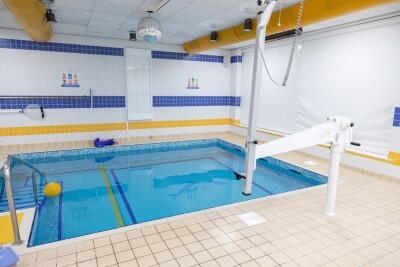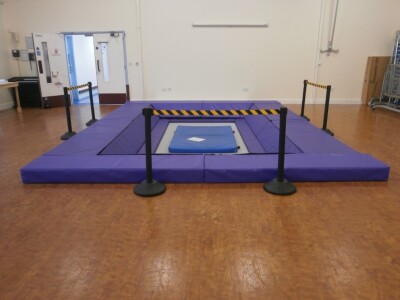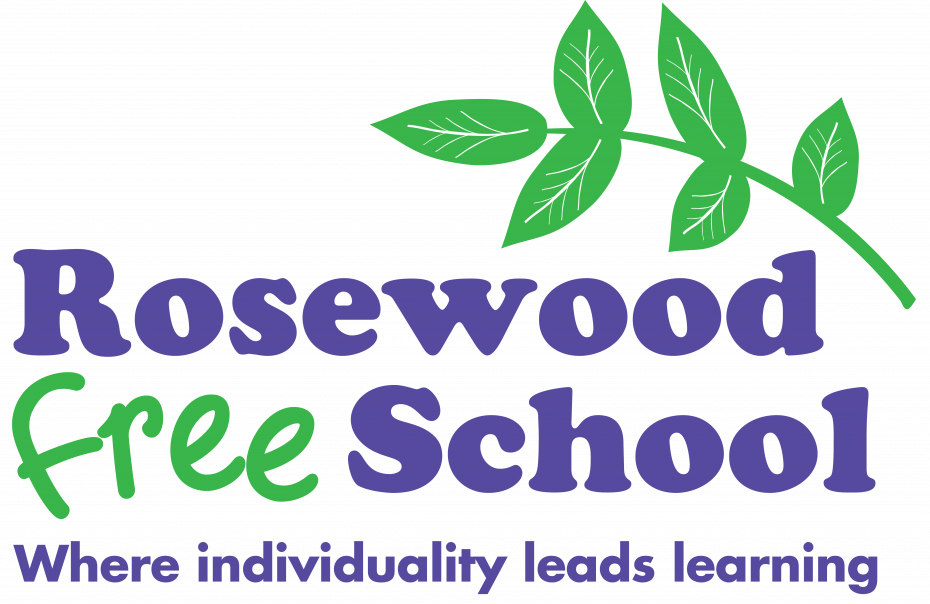Strategies and Resources
This page contains a collection of information about some of the practical strategies that we use to support teaching and learning at Rosewood. If you want to find out more about any of the items on this page, or if you need details about anything which isn't featured here, please ask us.
ACA - Affective Communication Assessment
If you hear our team refer to ACA, they are talking about the structured way in which we introduce stimuli to learners in order to observe and evaluate their communicative behaviours in response to those stimuli. The ACA approach enables us to develop an understanding of a learner's preferences, finding out what motivates them, which ultimately supports their learning and development.
Within an ACA activity session, the learners set the pace and control the interaction. Stages of ACA move from the learner influencing the adult's responses to the learner knowing that they can control the adult's responses. ACA forms one of the strands in the ImPACTS Communication Key Skill curriculum and assessment.
Aromatherapy and Massage
We use aromatherapy and massage at school on a regular basis; all staff have training in the use of massage oils as part of their core training. Learners benefit from the opportunity to have close one-to-one time with an adult for relationship building and intensive interaction. Massage sessions provide an ideal time for learners to express likes and dislikes about touch, textures and smells. We can also incorporate physiotherapy programmes and body awareness into our massage sessions, as appropriate for each individual.
Conductive Education
Conductive Education is an educational approach developed in Hungary by Dr. Andras Peto. It blends education, therapy, and learning into one comprehensive method, focusing on functionality and learning in everyday life. This holistic approach addresses the whole individual. It doesn’t only focus on gross and fine motor skills but also the learning opportunities alongside them, including Communication, Cognition, Environmental Control, Self-Help, and Self-Advocacy—the rest of the ImPACTS Key Skill Areas.
At Rosewood, we incorporate almost all the principles of Conductive Education into all aspects of our day. This promotes functionality, activity, and a purpose of engagement.
-
Conductor—At Rosewood, we have a qualified conductor teacher. However, each teacher or HLTA who leads a class takes responsibility for incorporating functional movement into education. Just like the orchestra conductor guides musicians, they lead fun, functional activities.
-
Group – Research shows how important it is to be social and share meaningful moments together. At Rosewood, we believe in the joy of group activities—whether in small groups, the whole class, or larger gatherings. These moments promote friendship, happiness, and a shared sense of achievement.
-
Facilitation- We facilitate (help) the learners achieve a goal. At Rosewood, we provide as much help as necessary but as little as possible, encouraging the learners to be active.
-
Daily Routine—At Rosewood, routines are an integral part of our days. We implement movement activities into our routines and find functional movement opportunities in natural, engaging ways.
-
Rhythmic Intention- Music and rhythm are an important element of our approach. We use rhythm and music to guide our movement and enhance learning. For example, songs as ‘ Let Me See Who is Sitting Tall’ or ‘I Saw a Tall Policeman’ help learners engage with specific activities, acting as a cue for movement and positioning.
How does it look at Rosewood? Our goal is to combine learning and movement in ways that are motivating, meaningful, and fun. Together, the therapy team, the conductor teacher, and the class staff work closely to embed Conductive Education into Rosewood’s daily practice.
Hydrotherapy
 Hydrotherapy is offered to learners on a needs led, timetabled basis. Learners will be supported by dedicated hydrotherapy assistants, with support and input given by the school physio team and class staff. Therapists will follow each learner's individual hydro program.
Hydrotherapy is offered to learners on a needs led, timetabled basis. Learners will be supported by dedicated hydrotherapy assistants, with support and input given by the school physio team and class staff. Therapists will follow each learner's individual hydro program.
Hydrotherapy gives learners the opportunity to have:
-
Freedom of movement – there is less restriction in the water, so this allows time to explore individual movement with some physical contact
-
Weight relief using properties of the water
-
Support for increase or decrease of muscle tone – the warmth of the water enhances relaxation or allows time and comfort for the desired need
-
Improved bowel function from movement in the water
-
Improved sensory integration by being in an immersive sensory environment
-
Exercise in warm water - this improves range of movement in joints, strengthens muscles, improves tolerance to exercise and increases fitness, improves circulation and cardiovascular function
-
Physical Development goals worked on - both generally day to day, and especially post-surgery, support is given with functional gross and fine motor movements. The resistance of the water is far greater than air which provides a perfect environment for this.
-
Enhanced general wellbeing through a therapeutic approach
Intensive Interaction
Our team use intensive interaction as part of their approach to support learners with their communication development. This video was compiled during lockdown but still contains some really useful information about why and how we use intensive interaction.
Oral Care
Oral care is another important element of routines for some learners, especially those who either don't eat orally at all, or who are practising early oral skills. This is another video created during lockdown but which shows and explains some of the reasons oral care is beneficial, and how we deliver oral care at Rosewood. If you would like any more information on the techniques or equipment used in the video please do ask.
Perfect Positioning
We know that 24-hour postural care is crucial for our children because it helps maintain proper body alignment, prevents deformities, and promotes overall health.
Many children with disabilities experience muscle imbalances or limited movement, which can lead to complications such as contractures, scoliosis, and pressure sores. It is hard for them to achieve good posture by themselves. By ensuring proper positioning during all daily activities including lying, sitting, and standing, 24-hour postural care supports physical comfort, respiratory function and digestive function.
At Rosewood we have training from our therapy team about how to support learners into a variety of positions integrate 'perfect positioning' into our classroom activities during the day, so that our learners have lots of opportunities for changes of position, and to use each position that they can be in for functional activity wherever possible. For example, being in a standing frame might be a great time for a learner to work with a switch toy, or sidelying might give a learner the best position in which to practise using their hands together to explore an activity.
Night time positioning, if needed, improves sleep quality, reduces pain, and enhances the child’s ability to engage in activities, promoting their overall well-being and quality of life. Postural management includes the use of devices such as wheelchairs, modular sleep systems, car seats, walking devices, specialist beds, cushions and more. As well as families and school staff, there are many people who might support with a learner's postural management: carers, healthcare professionals, physiotherapists, occupational therapists, and anyone else that may need to come on board to help someone with the management of their posture. It needs to happen at school, at home, at respite, and even if poorly in hospital. This video illustrates it nicely.
Rebound Therapy
 Rebound is offered to suitable learners on a timetabled basis. Learners will be supported by a qualified Rebound Therapist. The therapist follows each learner's individual Rebound programme.
Rebound is offered to suitable learners on a timetabled basis. Learners will be supported by a qualified Rebound Therapist. The therapist follows each learner's individual Rebound programme.
The unique properties of the trampoline means that rebound therapy:
-
Facilitates movement – enables more freedom of range of movement in a structured or freestyle way
-
Promotes balance – the uneven surface allows balance practice
-
Promotes an increase or decrease of muscle tone – this will depend on the strength of bounce
-
Promotes relaxation – the quiet environment offers relaxation opportunities
-
Promotes sensory integration – change of the environment, lighting or activities offered will vary
-
Improves fitness and exercise tolerance – increased level of opportunity
-
Improves communication skills – using the bounce to improve expulsion of air to support vocalisations
-
Stimulates the digestive system – the repetitive bounce supports internal movements
-
Improves bowel function – improved bodily functions
-
Offers internal organ massage – along with what we can see on the outside, the inside of the body is being gently rhythmically massaged
-
Enhances movement patterns – change of focus for each individual learner
-
Gives learners opportunities for one to one time and interaction – time that is up close and personal with a familiar therapist
Routines and Cues
We know that our children learn best when things are repeated many times, so much of our teaching and learning is built into the daily routines that take place in the classroom. When linked with regular cues which trigger particular events, whether they are visual, tactile, or auditory, regular activities enable learners to begin to predict the order of the world around them and the events that happen during their day. We have routines for lots of elements of the school day, from arrival and departure in the school hall, to arrival in their classroom, and routines within learning activities, including personalised songs to greet learners. Smells can also be used as a cue for some activities, for example the arrival of lunches in the classroom. Touch cues are an essential part of the routines around movement whether using chairs, standers or other equipment, or being hoisted up and down during personal care. If you are interested in seeing these in action, do ask your child's class team to demonstrate them to you.
Sensory Impairment
We know that sensory impairment (visual impairment and hearing impairment) can be a big barrier to learning for our children. All of our learners have a programme of ongoing observation and assessment in these areas, in order to make sure that we are maximising their potential to use their vision and hearing as functionally as possible. We have a wide range of multi-sensory approaches that we employ, alongside simple strategies, for example dimming the classroom lights so that learners can focus their vision on a single stimulus. Another example might be the use of high contrast or shiny materials to stimulate vision. We also use tactile exploration to support hearing, for example the use of the resonance boards gives learners a way of accessing sound through vibration.
Vision and Hearing are strands in our Communication Key Skill Area, because we know that they are an important component in communication. Learners may have a strength in using their vision or their hearing most effectively, and we aim to capitalise on this when thinking about their individual communication development. In addition to our school-based assessments, we receive input and support from Local Authority advisory teachers who can provide specific training to our teams, for example on the care and use of hearing aids in school.
Transitions
Our children make many transitions through their time at Rosewood. Some of these transitions are the simple moves between spaces within the class or the school, while others may be more significant. Here are a few of the ways in which we look to support transitions for learners in school.
-
Moving between different pieces of equipment, or different rooms in school can be challenging transitions for some of our learners. These transitions are supported through cues, and where appropriate through co-regulation - emotional support individual to each learner in order to help them cope with the immediate changes in their environment.
-
Moving up through the school through classes and Key Stages - these transitions are supported in various ways. Annual Reviews take changes in Key Stages into account and learners' EHCPs may be formally amended at significant points, for example the transition between Primary and Secondary education. We like to mark significant transitions with a celebration, whether it is moving from Nursery into full time school, finishing Primary and starting Secondary education, or leaving school. Class changes are supported with an extensive process in school, beginning with teachers sharing information about learners, short visits to the new class, then gradually extending visit times and ensuring that all members of the new class team know each learner. When a learner moves class we always move a 'friend' (a staff member who knows them really well) with them to support their move.
-
Transition to Adult Services at age 18 is a key change. We work with health and social care colleagues to ensure a smooth move into different services and to make sure that all our families have effective support for their young people at this stage.
-
Leaving Rosewood is another big transition for many learners who may have attended school for up to 17 years! Again, we will do our best to help each family identify appropriate next steps for their young person, and work with other agencies to enable each learner to move on to a place where they will be well supported. We will do this by sharing relevant information and working with the next setting or provision to create a bespoke transition plan for each young person. Learners leave Rosewood with a comprehensive PAL (Passport for Adult Living) which is a compilation of everything we think is important in order to provide good care and support for them in the future.
Vocal Play
Vocalisation is another strand in our ImPACTS Communication Key Skill Area. We listen to, observe, and evaluate the sounds that learners make to learn to interpret their meaning. We also have a lot of fun in vocal play with learners, as we encourage them to learn to control their voice for fun as well as in response to things that are happening in the classroom. The Resonant Tails equipment that we use in school gives learners the opportunity to play with cause and effect using their voices. Some of our switches and technology activities are voice activated, so that learners can practise using their voices to control the world around them. They also have lots of opportunities to learn to control adults with their voices too, as gaining attention in order to initiate communication is really important. Adults at Rosewood work hard to build trusting relationships which are needed in order to establish these sorts of play activities. We also work very closely to learners where it's needed, so that we can hear and respond to the tiniest of vocalisations. Staff can frequently be heard making lots of unusual noises in order to maintain a responsive interaction with learners - being 'in the moment' with learners is an important part of the way we work.

